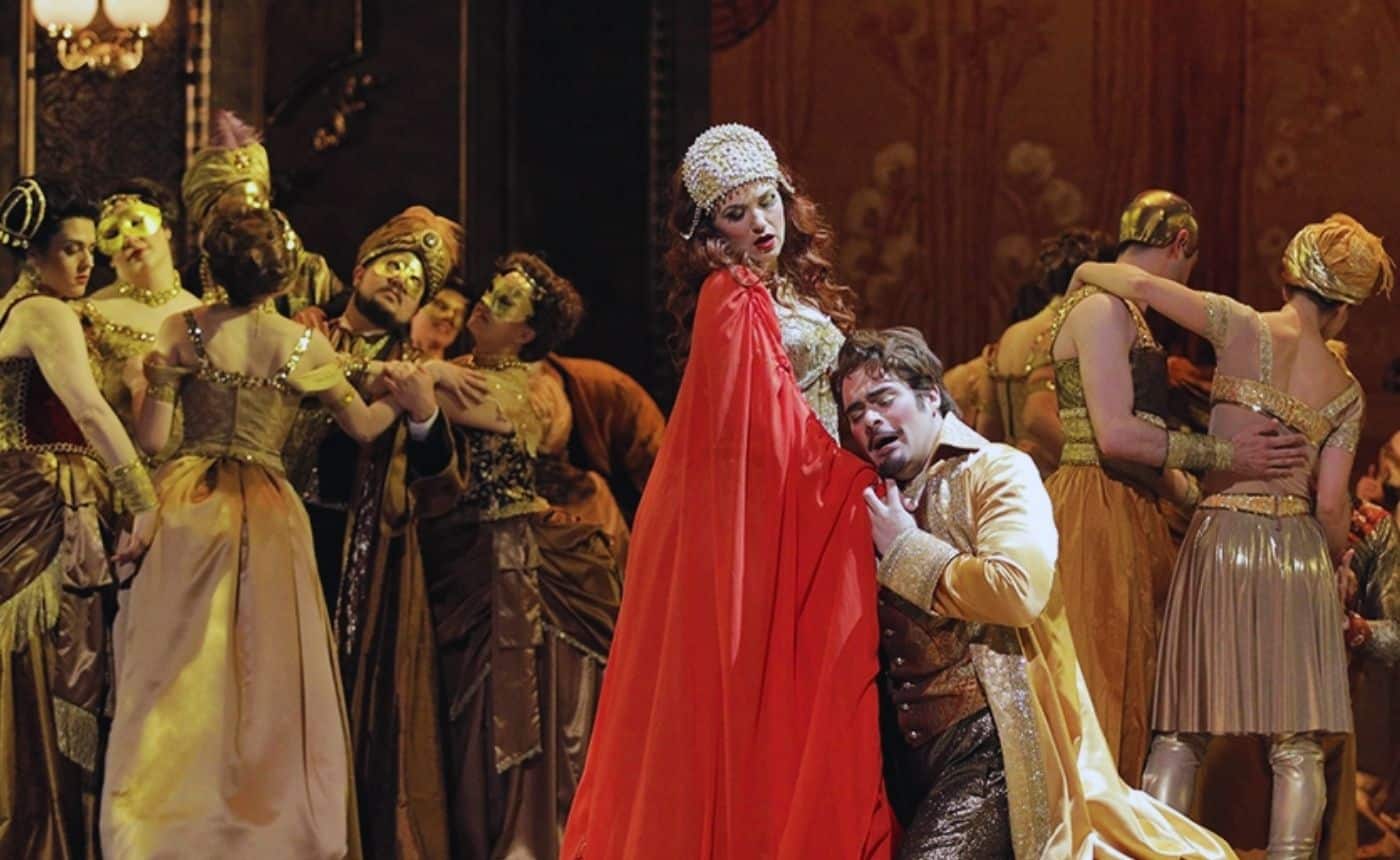Stage Director Peter Brook (b. 1924) and his 1983 film adaption La tragédie de Carmen
So, you thought you knew Carmen?
The visionary theatrical conception of director Peter Brook will make you think again.
When Peter Brook’s radical production of Shakespeare’s A Midsummer Night’s Dream astounded the theater world in 1970, The New York Times sent critic Clive Barnes to London to see what all the buzz was about. Barnes’ review called Brook “the world’s most imaginative and inventive director. If Brook had done nothing else but this ‘Dream’ he would have deserved a place in theater history.” But Brook went on to do much more, following his landmark ‘Dream’ with a reconceptualized Carmen a decade later. Brook’s Carmen not only proved to be an electrifying theatrical experience; it deepened every opera lover’s perceptions of a character we thought we knew.
Nearly two centuries after its composition, Carmen is often called the world’s most popular opera even though, in the numbers race for productions and performances, it seems to lag slightly behind a few other hits such as Puccini’s La bohème. Statistics notwithstanding, there is something about this opera that puts it ahead of all others in its familiarity and fascination; it’s the opera we’ve all grown up with, the one whose melodies we’re most likely to hear in the schoolyard or as elevator music. Its arias have the best joke lyrics (“Toreador-o, don’t spit on the floor-o…”). Most of all there is Carmen herself, the essential femme fatale, alluring and dangerous.
But in looking more deeply within the story, Brook saw something more compelling, more urgent in Carmen’s character: her preoccupations with the imperative to be free and her sense of the nearness of death. Carmen’s sense of fate and fatalism give a resonance to her Romani identity and the tradition of fortune-telling. This makes her story much more than a romance gone wrong: In Brook’s conception her willfulness, her seeming capriciousness, her almost feral nature make sense. In finding and illuminating these aspects of Carmen, Brook takes his cue from Bizet himself — from the ferocious intensity of the music’s “fate” theme and from Carmen’s reading of the Tarot cards that foretell her death, the moment of her greatest musical intensity in a role full of intense moments.
Bizet was ahead of his time in endowing the character of Carmen with this kind of emotional complexity. In 1875, when he was composing Carmen, the phrase “Gypsy girl” alone was sufficient to conjure a whole world of wanton sensuality and danger, and this world was the focus of the Bizet’s source for his music drama: Prosper Mérimée’s novella Carmen, a first-person account of life in Spain among the culture we now know as Romani and an early example of fatal attraction.
Brook adds substance to the superficial allure of Spain that fascinated French composers. For them, the Iberian peninsula’s sun and warmth represented something dangerously erotic — a place of impulsive sensuality that presented a challenge to the elegance and discipline of French music. The heady fascination with Spain shows in compositions such as Chabrier’s España, Lalo’s Symphonie espagnole and Ravel’s Rhapsodie espagnole, and it suited Bizet’s extraordinary ability to create a sense of place in his music. We hear this in the explosive opening bars of Carmen, which evoke the visceral excitement of the bull ring in Seville that will be the scene of Escamillo’s triumph and Carmen’s demise.
But almost immediately after we hear those smashing, cymbal-accented chords, we hear a second theme that takes Bizet’s drama beyond its source: Carmen’s preoccupation with fate. Against a foreboding background of tremolo strings, Carmen’s “fate theme” evokes the fatal destiny that looms ever closer for her. Brook makes this motif the opera’s musical centerpiece — the reason why Carmen defies authority and ignores bourgeois convention to assert her freedom. With these chords, before the action of the opera even begins, we can sense that Carmen will do anything it takes to get what she wants. But in the end, nothing will be enough. This preoccupation with free will versus destiny was a recurrent theme in music of the Late Romantic period, and in 1888 — when Tchaikovsky was writing his fifth symphony — Carmen’s five-note “fate theme” was one of two that inspired the Russian composer in developing his own work on this subject. The other was the famous four-note theme of “fate knocking on the door” in Beethoven’s Symphony No. 5.





